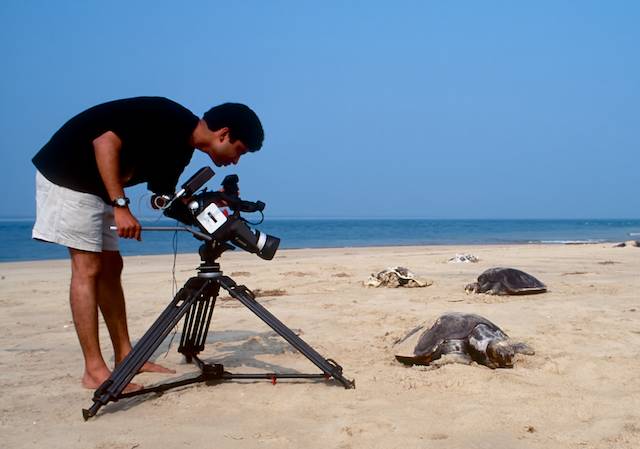
A well-researched film that illustrates a problem and offers practical solutions can be a powerful catalyst for change.
Editing the video
Editing a video requires not only the right hardware and software but also specialized skills. Skillful editing is what makes a film interesting and watchable. In every city and town you are likely to find editing facilities that can be rented. These facilities/editing studios usually have their own editors and you can get your material edited by a professional editor under your supervision. However, working in a studio can be expensive as both the studio and the editor will charge by the hour. If you don’t have a budget, see if you can find an editing studio that is willing to edit your project free of charge for the cause of conservation. If not, try to locate a freelance filmmaker who can help.
The alternative is to edit it yourself. There are several inexpensive software programmes for both PCs and Macs that allow you to do sophisticated editing even with a laptop. Investigate these options by reading up on the internet and by talking to video editors (or your neighbourhood computer geeks!).
As you begin your editing you should simultaneously refine your script so that it is crisp and fits the shots that you’ve chosen. Here are a few tips for the script and for the edit:
- Keep the script simple and the words to a minimum. Let the visuals do most of the talking.
- Don’t state the obvious. Avoid commentary such as “the excavator is now scooping the soil”. People can see this for themselves.
- If possible, use a professional narrator and record the narration in a recording studio to add a professional touch to your video. If you cannot afford a professional narrator, you can either narrate it yourself or get a friend who has some experience with radio or theatre to do it for you. Practice several times to make sure you know where to pause, which word to emphasize etc. Retake a sentence as many times as necessary until you are sure that every word is clear.
- Avoid gimmicky editing and ‘marriage video’ type of transitions or effects between shots.
- Avoid using loud or inappropriate music. If at all music is needed, find something subtle and keep it low. Never let anything interfere with the commentary.
- Avoid overloading the script with information and keep statistics to the minimum.
- Focus on the main problem and its solutions rather than trying to cram in everything you know.
- Keep the video short. Ten minutes can be a long time!
- Once you’ve made a point forcefully, move on and don’t keep dwelling on it.
- If you can get a point across with just one or two shots, avoid using 5 or 10.
- Stick to the facts. Don’t exaggerate anything or manipulate images (beyond doing some basic colour correction and adjusting of contrast and brightness of the images).
- Once the editing is finished, make several backups of the finished programme onto digital videotape, hard drives and DVDs.
Getting it seen by the right people / stakeholders
Making a film is one thing; getting it seen by the right people is quite a different thing. Make a list of the people who ought to see the film and who have the power to make a difference, and then see how you can get them to see it. Just sending them a DVD or YouTube link is not enough as they may just put it aside and never see it. See if you can work with NGOs and other conservationists on this. They may have contacts that you don’t. If you have made a well-researched set of recommendations for solving the problem, follow up to see that decision makers who have seen the film take it forward towards a resolution. Organise special screenings for the media so that they can generate their own stories on the subject and bring more pressure to bear on decision makers.
Getting it out to a larger audience
If you would like a larger audience to see the film, one of the most effective ways is by putting it on YouTube or Vimeo.

 CI is a non-profit, non-commercial portal that aims to facilitate wildlife and nature conservation by providing reliable information and the tools needed to campaign effectively.
CI is a non-profit, non-commercial portal that aims to facilitate wildlife and nature conservation by providing reliable information and the tools needed to campaign effectively.
Older Comments 2
This is really a nice film. Thanks so much for this. This movie teaches lot of things regarding tigers and nature conservation
Good site to learn more about TIGER’S.